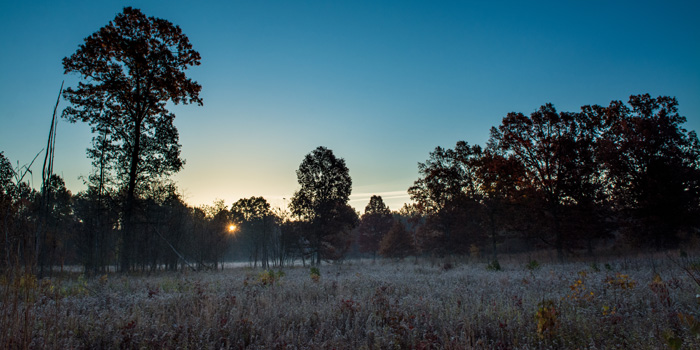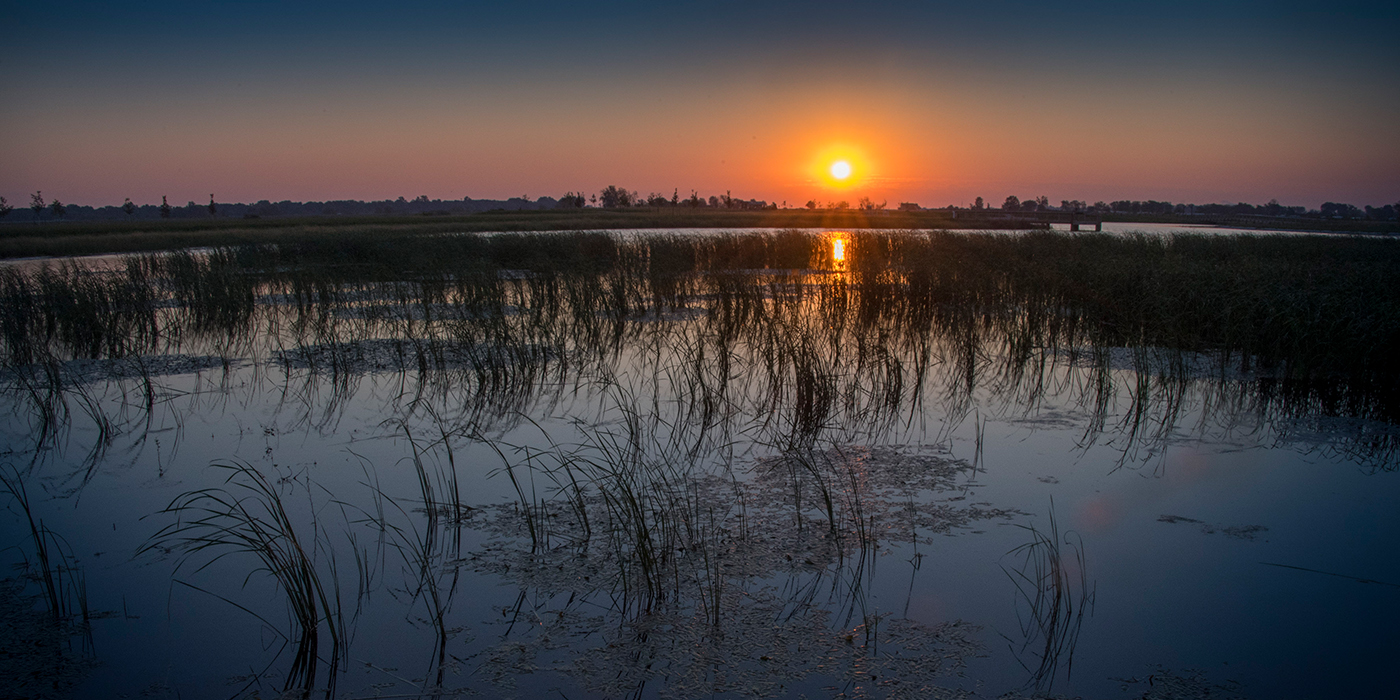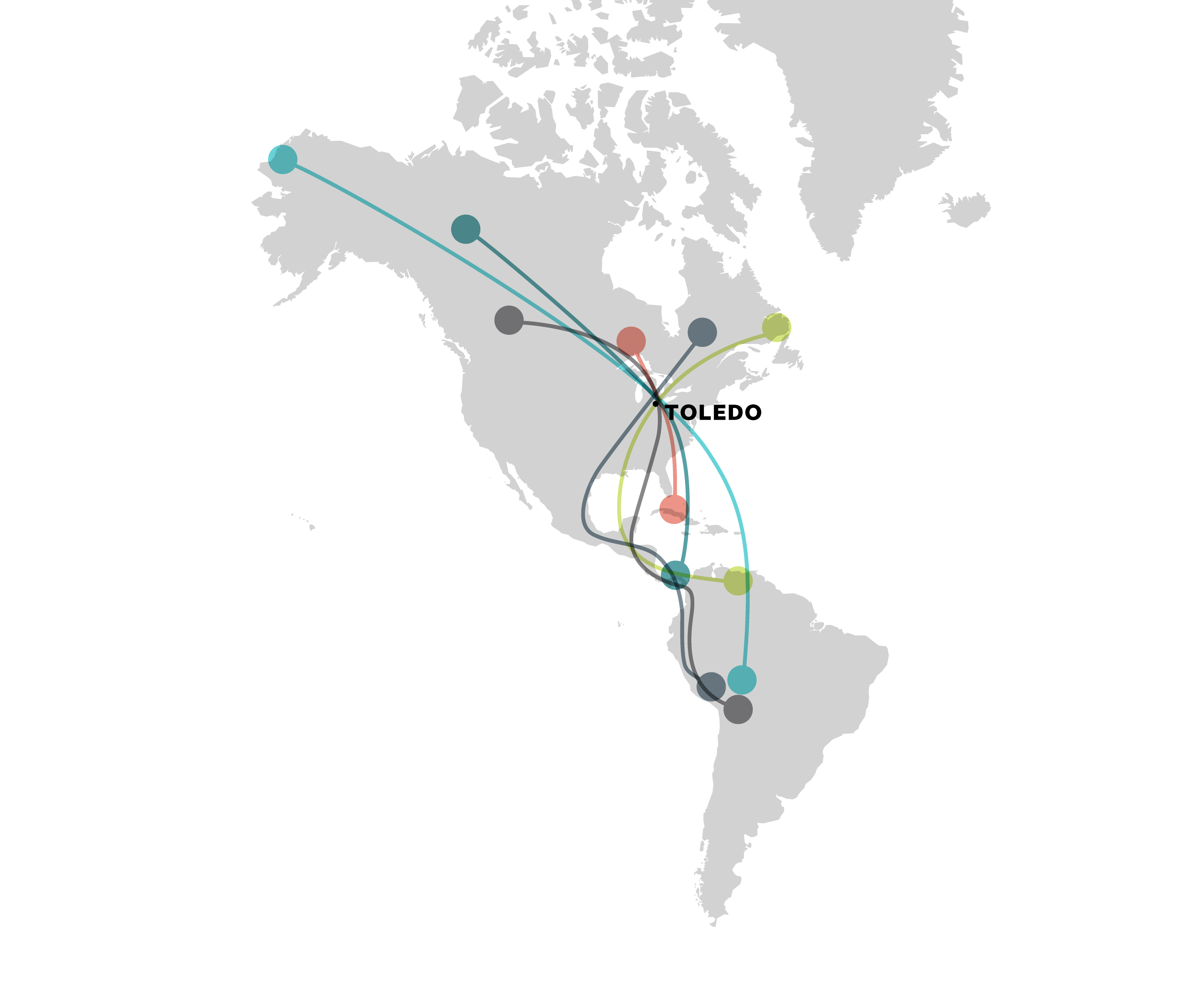Where Are the Birds in Winter? Right Here!
There were 91 species tallied in the annual Toledo Christmas Bird Count, and another 68 species spotted in the Grand Rapids-Waterville count.


Birding at Oak Openings Metropark
More than 250 species of birds are listed on the Oak Openings Preserve checklist. The park, and the larger Oak Openings Region of which it is a part, is a premier birding destination in the region. Listed as an Audubon Important Bird Area, “The Oaks” attracts novice and advanced birders alike. The Oak Openings Region is a rare collection of habitats, from sand barrens to grassy wetlands, and the home of more rare and endangered plant species than anywhere else in Ohio.
Lark sparrows, a state-listed endangered species, nest on the dunes and are easy to see along Girdham Road in the spring. Pine siskins and other northern finches are among the winter visitors that frequent the Window On Wildlife at at the Buehner Center. Birders may also be interested to know that the tiny, federally-endangered Karner blue butterfly flits about in the prairies, where they were reintroduced.
From the tiniest warblers to red-headed woodpeckers to the largest birds of prey, Oak Openings is a birder or botanist’s paradise. As the largest Metropark, with more 4,000 acres and trails from just a half-mile to more than 15 miles, there is also plenty of room to roam. Camping and the Caretaker's Cottage are available for overnight stays.
Wildwood Preserve in West Toledo, Secor Metropark in Berkey and Wiregrass Lake in Spencer Township are also within the Oak Openings region.
Learn More about Oak Openings >

Birding at Pearson Metropark
Pearson, in Oregon, is close to the Lake Erie shore, as the birds fly. Preserving one of the last pieces of the Great Black Swamp, the park offers a variety of birding experiences.
The original, 300-acre park, with an entrance on Lallendorf Road at State Route 2 (Navarre Avenue), is a swamp woods with well-warn paths and charming Depression era stone shelters. A Window on Wildlife at the Packer-Hammersmith Center overlooks feeding stations where you are likely to see a variety of birds, especially warblers during migration. Other species to look and listen for are woodpeckers, oriole, red-eyed vireo, ovenbird, scarlet tanager, redstart, woodthrush, hermit thrush and flycatchers.
Until only a few years ago, Pearson North, a 300-acre addition with an entrance on Seaman Road, was a farm field with a small woodlot. Today, it is a restored wetland. Gone are the ceramic tiles that once drained the “swamp,” replaced with a meandering stream that diverts runoff water onto the land, creating a giant bird bath.
From an observation deck adjacent to a late-1800s Black Swamp Cabin, visitors can view a variety of water-loving birds. It is common to see killdeer, great egrets and great blue herons, adding a whole new dimension to birding in the popular park. Also look for American kestrels hunting in the fields and the occasional snipe.

Howard Marsh
Located on the Lake Erie shore where birds gather to nest or rest before making the journey over or around the big lake, Howard Marsh is an exciting new development for bird lovers. Metroparks restored the 1,000-acre property, including more than 600 acres of coastal wetland habitat. It has a water trail and dike top hiking trail. Adjacent to Metzger Marsh Wildlife Area, Howard Marsh and part of an even larger complex of local, state and federal natural areas, it instantly became a stop for birders, especially during the spring and fall migrations of shorebirds, waterfowl and raptors.

April 16–30
First arrivals for many species, including Neotropical migrants like warblers, vireos, and orioles. Early warblers like Black-and-white, Palm, Nashville, and Black-throated Green are numerous by month’s end. In migrant traps along the lakeshore, this is the best time to find Pine and Orange-crowned Warblers, and a time when “southern” warblers like Worm-eating, Hooded, and Yellow-throated may appear. Typical migrants in this period include Yellow-bellied Sapsucker, Ruby-crowned Kinglet, Blue-gray Gnatcatcher, and sparrows such as Swamp and White-throated. Herons, egrets, and rails have their main arrival here. Raptor migration features Broad-winged and Sharp-shinned Hawks and Osprey. Shorebird variety and numbers continue to increase.
May 1–10
Sometimes in this period, weather conditions will produce the first really massive arrivals of Neotropical migrants. In the migrant traps along the lakeshore, warbler counts may jump from about a dozen species to nearly 30 species literally overnight, and other Neotropical migrants will abruptly pick up in numbers and variety also. After this big wave, numbers of individual migrants will drop off between successive waves of arrivals, but diversity will remain high through most of May. Early migrants like Rusty Blackbird and Fox Sparrow are mostly gone before May 10th. Migration of raptors and waterfowl is winding down, but shorebirds are still building toward their peak.
May 11–20
Numbers of migrants will vary day to day depending on weather, but diversity is very high during this period. Among the warblers, earlier migrants like Palm and Yellow-rumped are declining, but later ones like Magnolia, Blackpoll, and Bay-breasted have arrived in numbers. Cuckoos, Ruby-throated Hummingbird, Indigo Bunting, and Bobolink are all typical mid-May migrants. Hermit Thrush is past its peak but the other thrushes are abundant, and flycatchers are arriving. Diversity and numbers of shorebirds are excellent in available habitat.
May 21–31
Some days continue to produce very high numbers of migrants, although they are harder to see with the trees fully leafed out. Summer residents are singing but there is less song now from migrants, since females (which generally don’t sing) tend to migrate later than males. This is the peak migration for the elusive Connecticut Warbler, and good for numbers of other late migrants like Mourning, Wilson’s, and Canada Warblers and American Redstart. Yellow-bellied, Alder, and Olive-sided Flycatchers all peak in late May, Red-eyed Vireo can be abundant, and thrush migration continues to be excellent. Many shorebird species are now at their peak numbers.
Timing overview created by Kenn Kaufman
There were 91 species tallied in the annual Toledo Christmas Bird Count, and another 68 species spotted in the Grand Rapids-Waterville count.
Every spring, bird enthusiasts from around the world flock to the south shore of Lake Erie for the annual warbler migration. Now, those birders will have another destination – a new Metropark.
Local Girl Scouts built house wren boxes for Swan Creek Preserve and Middlegrounds Metroparks to provide safe nesting havens for the birds.